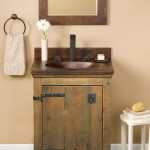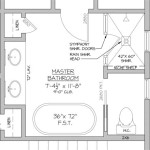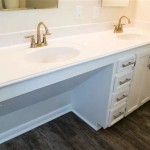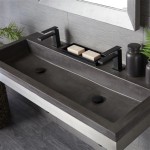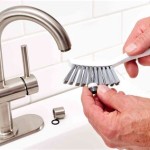Changing Bathroom LED Bulbs: A Comprehensive Guide
Replacing a bathroom LED bulb is a relatively straightforward task that most homeowners can accomplish without professional assistance. However, safety precautions and a basic understanding of bulb types and electrical systems are crucial for a successful and safe replacement. This article provides a comprehensive guide to changing bathroom LED bulbs, covering essential safety measures, bulb identification, replacement procedures, and troubleshooting common issues.
The evolution of lighting technology has led to the widespread adoption of LED bulbs due to their energy efficiency, longevity, and reduced environmental impact. Bathrooms, often requiring consistent and reliable illumination, have benefited greatly from this transition. Understanding the nuances of selecting and replacing these bulbs ensures optimal performance and a well-lit bathroom environment.
Key Point 1: Prioritizing Safety and Preparation
Before initiating any electrical work, including the replacement of a bathroom LED bulb, safety must be the foremost consideration. Electricity poses a significant risk of shock and injury if handled improperly. The following steps are essential for ensuring a safe working environment:
Turn off the power: Locate the circuit breaker that controls the bathroom lighting fixture. This is typically found in the home's electrical panel. Flip the corresponding breaker to the "off" position. Double-check that the power is indeed off by attempting to turn on the light switch in the bathroom. If the light does not illuminate, the power is successfully disconnected.
Gather necessary tools: While a complex toolkit is not required, having a few essential tools on hand will streamline the process. These include:
- A non-contact voltage tester: This device is used to confirm that the power is indeed off at the fixture before touching any wires. It detects electrical current without direct contact.
- A stepladder or sturdy platform: This is necessary if the light fixture is located out of easy reach. Ensure the ladder is stable and placed on a level surface.
- Gloves: Insulated gloves provide an extra layer of protection against accidental electrical contact.
- Eye protection: Safety glasses or goggles protect the eyes from debris that may fall during the bulb replacement.
- A new LED bulb: Selecting the correct replacement bulb is crucial, and will be discussed further in the next section.
Allow the bulb to cool: Even though LED bulbs generate significantly less heat than incandescent bulbs, giving the bulb time to cool down before handling it reduces the risk of burns. Wait several minutes after turning off the light before attempting to remove the bulb.
Key Point 2: Identifying the Correct Replacement Bulb
Replacing an LED bulb requires selecting a compatible replacement. Factors such as bulb type, base type, wattage equivalent, and color temperature should be considered to ensure proper fit and desired lighting characteristics. Understanding these factors will allow for a seamless replacement and optimal lighting performance.
Determine the bulb type: LED bulbs come in various shapes and sizes, each suited for different applications. Common types include:
- A-series bulbs: These are the standard, pear-shaped bulbs that are commonly used in many household fixtures.
- Reflector bulbs (R and BR): These bulbs have a reflective coating that directs light in a specific direction, making them suitable for recessed lighting and spotlights.
- Globe bulbs (G): These round bulbs are often used in vanity lights and decorative fixtures.
- Candle bulbs (C): These bulbs have a decorative, flame-like shape and are often used in chandeliers and wall sconces.
- Tubular bulbs (T): These cylindrical bulbs are frequently used in strip lights and utility fixtures.
The type of bulb is usually indicated on the bulb itself or on the packaging.
Identify the base type: The base of the bulb is the part that connects to the fixture. Common base types include:
- E26 (Medium Screw Base): This is the most common base type in North America.
- E12 (Candelabra Screw Base): This smaller base is used in candle bulbs and some decorative fixtures.
- GU10 (Twist and Lock): This base has two pins that lock into the fixture with a twist.
- MR16 (Bi-Pin): This base has two small pins that plug into the fixture.
The base type is also usually indicated on the bulb itself or on the packaging. Matching the base type is essential for the bulb to fit properly into the fixture.
Consider wattage equivalent: LED bulbs are much more energy-efficient than incandescent bulbs. When replacing an incandescent bulb with an LED, it's important to consider the wattage equivalent. This refers to the amount of light the LED bulb produces compared to an incandescent bulb of a certain wattage. For example, a 10-watt LED bulb may be equivalent to a 60-watt incandescent bulb.
Choose the appropriate color temperature: Color temperature is measured in Kelvin (K) and describes the warmth or coolness of the light. Lower Kelvin values (e.g., 2700K) produce warm, yellowish light, while higher Kelvin values (e.g., 5000K) produce cool, bluish-white light. For bathrooms, a color temperature between 2700K and 4000K is generally recommended, depending on personal preference and the desired ambiance.
Check for compatibility with dimmers: If the bathroom light fixture is connected to a dimmer switch, ensure that the replacement LED bulb is compatible with dimmers. Not all LED bulbs are dimmable, and using a non-dimmable LED bulb with a dimmer switch can cause flickering or damage to the bulb or dimmer.
Key Point 3: The Replacement Procedure
Once the necessary safety precautions have been taken and the correct replacement bulb has been identified, the actual replacement process can be initiated. This process involves carefully removing the old bulb and installing the new one, ensuring a secure and functional connection.
Removing the old bulb:
- Screw-in bulbs: For screw-in bulbs, gently unscrew the bulb in a counter-clockwise direction. If the bulb is stuck, try wearing rubber gloves to improve grip. Avoid applying excessive force, as this could break the bulb.
- Twist-and-lock bulbs: For twist-and-lock bulbs, locate the release mechanism (usually a small button or tab) and press it while twisting the bulb counter-clockwise. Once the bulb is unlocked, it can be gently pulled out of the socket.
- Pin-based bulbs: For pin-based bulbs, carefully pull the bulb straight out of the socket. Avoid twisting or bending the pins.
Dispose of the old bulb properly according to local regulations. LED bulbs are generally considered non-hazardous waste, but it's always best to check with local authorities to ensure proper disposal.
Installing the new bulb:
- Screw-in bulbs: Carefully screw the new bulb into the socket in a clockwise direction. Do not overtighten, as this could damage the socket. Screw the bulb in until it is snug but not overly tight.
- Twist-and-lock bulbs: Align the pins of the new bulb with the slots in the socket and insert the bulb. Twist the bulb clockwise until it locks into place.
- Pin-based bulbs: Align the pins of the new bulb with the holes in the socket and gently push the bulb into place.
Testing the new bulb: After installing the new bulb, restore power to the circuit by flipping the circuit breaker back to the "on" position. Turn on the light switch in the bathroom to test the new bulb. If the bulb illuminates, the replacement was successful. If the bulb does not illuminate, proceed to the troubleshooting section.
Troubleshooting Common Issues
Despite careful preparation and execution, issues may arise during the LED bulb replacement process. The following section addresses some common problems and offers potential solutions.
The new bulb does not light up:
- Check the circuit breaker: Ensure that the circuit breaker is in the "on" position and has not tripped. If the breaker has tripped, reset it by flipping it to the "off" position and then back to the "on" position.
- Verify bulb compatibility: Confirm that the new bulb is compatible with the fixture and the dimmer switch (if applicable).
- Inspect the socket: Check the socket for any signs of damage or corrosion. If the socket is damaged, it may need to be replaced by a qualified electrician.
- Test the bulb in another fixture: Try the new bulb in another fixture to rule out a faulty bulb.
The bulb flickers:
- Check the dimmer switch compatibility: If the bulb is connected to a dimmer switch, ensure that the bulb is dimmable and that the dimmer switch is compatible with LED bulbs.
- Inspect the wiring: Loose or corroded wiring can cause flickering. Inspect the wiring connections in the fixture and tighten or replace any loose or corroded connections. This is best done by a qualified electrician if you are not comfortable working with electrical wiring.
- Consider voltage fluctuations: Voltage fluctuations in the home's electrical system can also cause flickering. A surge protector may help to stabilize the voltage.
The bulb is too dim or too bright:
- Check the wattage equivalent: Ensure that the wattage equivalent of the new bulb is appropriate for the desired level of brightness.
- Adjust the dimmer switch: If the bulb is connected to a dimmer switch, adjust the dimmer to achieve the desired level of brightness.
- Consider the color temperature: The color temperature of the bulb can also affect perceived brightness. A higher color temperature (cooler light) may appear brighter than a lower color temperature (warmer light).
The bulb makes a buzzing or humming noise:
- Check the dimmer switch compatibility: Incompatibility between the bulb and the dimmer switch is the most common cause of buzzing or humming. Ensure that the bulb is dimmable and that the dimmer switch is compatible with LED bulbs.
- Inspect the wiring: Loose wiring connections can also cause noise. Inspect the wiring connections in the fixture and tighten any loose connections.
Successfully changing a bathroom LED bulb involves a combination of safety awareness, proper bulb selection, and careful execution. By following the guidelines outlined in this article, homeowners can confidently and safely maintain the lighting in their bathrooms.

How To Change Your Bathroom Light Bulb

How To Update Old And Yellowed Recessed Lights Led Thrifty Decor Diy Organizing

How To Replace Mr16 Halogen Bulb With A Led 12v Replacement Bathroom

How To Update Bathroom Lighting It S As Easy Changing A Lightbulb Dogs Don T Eat

How To Change Bulb In This Bathroom Light Home Improvement Stack Exchange

How To Update Bathroom Lighting It S As Easy Changing A Lightbulb Dogs Don T Eat

How To Replace A Bathroom Vanity Light Fixture

How To Change A Lightbulb In Recessed Light 3 Easy Solutions

How To Replace Shower Light Bulb Recessed The Wall

How To Change A Bathroom Light Bulb In Dome Enclosure Changing Ceiling
Related Posts
